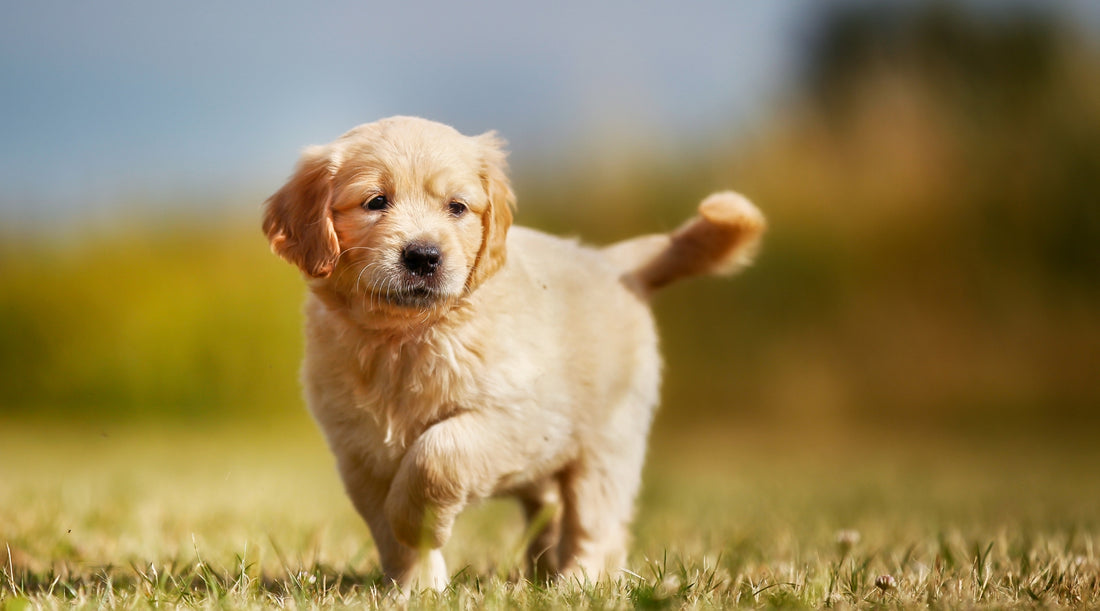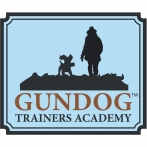
When should you start training a gundog puppy?
Share
At this time of year, it seems like every man (or woman) and their dog is bringing home a new gundog puppy. And if you’re one of them, you might be itching to start your basic training.
For first-time dog owners, you might be overwhelmed by everything you need to teach your little bundle of chaos.
For those more experienced, you might be cautiously planning how to avoid making the same mistakes you made with your first dog with your new recruit.
Either way, if you’ve recently collected your gundog puppy you might be wondering when you can get your teeth stuck into the “real” stuff alongside the toilet training and early socialisation.
In this blog, we’ll explore how soon you can start training, what foundation skills you should teach your gundog puppy first, and how much training you should do with your youngster. Finally, we will also discuss what you can do if your dog is no longer a puppy but you want to get started with gundog training.

How soon can you start gundog training with a puppy?
Traditionally, it was thought that gundog training should begin when the dog had mentally matured and was around 6 to 8 months old.
Some trainers also advocate waiting until the dog’s adult teeth have come through, as painful gums can prevent dogs from wanting to pick, carry, and hold the retrieve articles.
Waiting is, however, rarely beneficial. It is too easy to overlook the all-important early learning events when you tell yourself you will not start gundog training until the dog is six months old.
Owners miss out on thousands of opportunities to reward their puppies for their natural behaviours and don’t contemplate how their daily interactions with their puppies are beginning to mould their minds in the early months.
When your labrador puppy picks up a shoe for the first time, you want to praise them and encourage them into you, not snatch the shoe from their mouth. When your vizsla puppy points on something in the hedge, investigate with them, don’t pull them away on the lead. When your spaniel puppy starts hunting on a scent near your feet, sneak something out for them to find something right by you, don’t keep walking and expect them to follow you.
This means that gundog training needs to start when you bring your retriever, spaniel or HPR puppy home at eight weeks old.
The early stages of training should concentrate on building a solid bond between you, the handler, and your puppy, fostering trust and understanding.
Once you have nailed this, you can start to look at the basic gundog cues you will need to turn your puppy into a well-rounded pet gundog that’s also ready for beating, picking up, sitting on the peg, working tests and field trials, or whatever your goals are.
It should be noted that gundog training methods have changed drastically over the last few years. While the old-school approach is mainly unsuitable for puppies, modern, positive reinforcement-based, and force-free methods can be used to train gundogs of all ages.
Here at the Gundog Trainers Academy, we only use ethical, force-free training methods. These methods focus on rewarding our gundogs for the behaviours we want and avoid punishing them if they make a mistake.
You will not be able to start in-person gundog training until your puppy has finished its entire course of vaccinations—your vet will be able to advise you on the timing of this, but it could be up to 14 weeks old.
You can start training immediately at home using online resources such as our membership.

What to teach your gundog puppy first.
Before we look at what you need to teach your gundog puppy, let’s briefly explore the jobs they have been bred for.
Retrievers
Such as labradors, golden retrievers, and flat-coat retrievers, are bred to be steady next to their handler while game is shot. They are then sent to pick the game and bring it back quickly and cleanly so that it can be prepared and cooked for the table.
Hunting Retrievers
Such as cocker spaniels, springer spaniels, and clumber spaniels, are bred to hunt for birds in cover before flushing them for the Gun to shoot. If a retriever isn’t present, it will also be required to pick the birds and bring them back in the same way so that they can be prepared for the table.
Hunting Pointing Retrievers (HPRs)
Such as vizsla, pointers, and weimaraners are bred to hunt on extensive open grounds like moorlands and will point at the birds to show the Gun its location. The Gun can then move closer before the HPR flushes the bird for the Gun to shoot. If needed, they will retrieve the bird and deliver it to hand, ready to be cooked into a healthy meal.
Now that we know what gundogs are bred to do, we can examine the basic behaviours they’ll need to work successfully in the field and be fulfilled and happy pets.
Come/Recall
Teaching your gundog to return promptly when called is a vital cue for everyone’s safety.
Sit/Stay
Fundamental for steadiness and control. This builds on to our stop whistle cue later.
Heel
No one wants a dog that drags them about on the daily walk.
Retrieve
We harness the natural retrieving instincts by teaching them to fetch and return items gently and efficiently.
Hunting
We can also teach our hunting dogs to put their noses down and follow scent on cue while staying close to us.
There is no correct order of what to teach first when teaching the basics. However, if you really want to prioritise and only teach them one thing, make sure it is a reliable recall!
You must work on all 5 of these behaviours with your puppy. Provided that you start with easy criteria and build behaviours up gradually, you should make good progress across the board simultaneously.

How much training should you be doing with your gundog puppy?
Gundogs, particularly those from working lines, are known for being “busy” and having lots of energy.
If you’re a first-time gundog owner, you might be shocked at how challenging it can be to get your puppy to settle at home.
You’ve probably heard the saying “a tired dog is a good dog,” but it’s really important that we don’t overexert our gundog puppies. Stick to the 5-minute rule to ensure their joints develop properly and prevent health issues later in life.
This means you should walk or exercise your puppy for about 5 minutes per month of its age. So, if it’s six months old, you should only do about half an hour.
If you have a particularly active puppy who is into everything at home and struggles to relax, you probably think this isn’t enough. But a longer walk isn’t the answer.
The best way to tire your gundog puppy out is to get it to use its brain, and this can be done most effectively with training.
When it comes to training, keep the session short and often. It is much better to do a few minutes of clicker training while the kettle is boiling and your tea is brewing than to try to do an hour at the end of the day.
You can do as many sessions as you want, but ensure your student is keen and willing. Puppies have short attention spans, which you want to capture. Always stop before they get bored.

Can you start gundog training if your dog is no longer a puppy?
As GTA co-founder Jules Morgan says, gundog training is, in many ways, just core obedience with lots of twiddly bits.
Unless you’ve done no training at all, once your dog is out of puppyhood, it’s likely that it has started to learn and understand the basic cues needed, such as recall, sit and stay, and heelwork.
This means it is a relatively easy transition to breed-specific gundog skills such as hunting and retrieving.
They might have some ingrained undesirable habits, and it might take extra time and patience to help them learn new responses to cues and working in the natural environment.
However, consistent, patient, and positive training methods can overcome all of this. With the right mindset and techniques, an older gundog can become just as proficient in the field as one trained from puppyhood.
If you’re ready to embark on your gundog training journey today, the Gundog Trainers Academy Membership will provide you with instant access to a comprehensive library of online training resources, all designed to help you get your ethical gundog training journey off to the best start.
